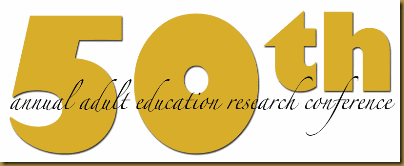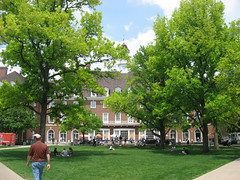We are crushed into a room much too small for the number of people present (any hear of “fire hazard”?). I wonder if it will be a metaphor for what it to come.
Laurel Richardson is introducing the theme of this most interesting session looking at Carolyn’s newest work, Revision. The panel will read parts of her book and then ask Carolyn questions about it. What an interesting panel discussion concept.
Laurel reads Carolyn’s opening paragraph, and why she decided to begin with this paragraph, which is about a dream sequence. Carolyn intentionally does not say what dreams mean. She often speaks and then asks questions about them. This reminds me of my own work, which cannot happen without semicolons and parentheses. Carolyn says that questions often generate new ones and on and on. I am thinking about how my own autoethnographic voice is developing, and how Carolyn reminded me before this session to email her the link to my blog where I have been liveblogging the conference.
This dream sequence is about autoethnography itself, especially about drawing lines and crossing them, and being aware of whether some people will be concerned with it, or not. How much is the dream and how much do we put there ourselves?
Laurel is reading one last sentence, around the narrative challenge that leads into the other challenges that really lead to the heart of the book (pg. 13). Glad I already bought this book right when it came out. I have not yet read it, as I have been crazed with work and teaching and doctoral studies. I suppose it will be the one that is next on the list to read upon my return, especially after finally meeting Carolyn and now seeing her read in my mind’s eye when I now read her works.
The detail Carolyn chooses to tell or not tell, and how issues of gender affects the tales. This next panelist, Jonathan Wyatt, wants to know more about the writing process. He then did a similar form of writing as Carolyn did. It seems the questions were wound within his own story modeled off Carolyn’s work.
When Carolyn first started writing, she was told to “just write everything” and then delete later. She tries to put herself back in the moment when she writes, and puts it all down. When she writes stories, as opposed to prose which is written and rewritten, it seems it just comes to her and she put it down on the page. With her stories, there is often something that happens that urges the story on. She does not always choose to put much back story into the work, and the question is when does back story come in and when should it be placed away. For the scene with the classroom, she considered the variety and complexity of the realm of positions that exist in a room.
Julie White reads from chapter 11. She reads from Barack Obama who promises to end the war and the culture of fear. I love Barack Obama, but I do not think he has done a lot to end the war and make thee world a safer place. Maybe it is unrealistic on my behalf to expect it to happen so quickly. Oh, Julie is still reading, now about Carolyn’s flying at the time of September 11. This brings me back to 9/11, when I was still teaching and we were on strike when the attacks happened. Julie continues about how the radio news reporters help Carolyn to feel not quite so alone. I am having trouble paying attention. I recall seeing parents covered in dust and debris walk into our school to fetch their children later on the morning of the attack. They walked from the World Trade to us on East 56th Street. They walked since all mass transit in NY was shut down. It stopped for some time, as the powers that be did whatever they had in mind to make them want to stop the entire subway system. Carolyn continues speaking through Julie’s reading, about the taxi driver who raises many of the issues about people who resemble those terrorists who changed so many things now eight years ago. Julie talked about how the media became everybody’s lifeline in Australia, where there were horrible fires that killed hundreds and destroyed thousands.
Carolyn became obsessed with the moment to moment life after the event of 9/11. She ended the book with the quote from Barack Obama, which she felt was the first time there was hope coming after the many difficult years after 9/11. Carolyn had a number of episodes to discuss, as well as addressing the issues where to bring in literature and analysis.
Norman Denzin is speaking now, where he said that this is a very important book in the autoethnographic genre and methodology. He asks how to hold it all together, now after the difficulties since 9/11, and how there is now the Obama hope. Denzin read about Carolyn’s initial shower scene, and he flashed to the Psycho shower scene. He then speaks about a shower scene in Brian De Palma’s Dressed to Kill (not familiar with this movie). I agree with Norm, where he said that he “does not take anything as innocent.” There is not an innocent scene, and there is not anything innocent or unconnected or isolated; whose reading is it?
Carolyn, when she heard Norm speak about the shower scene, she in turn went to the showers in the Holocaust. Interesting how these themes turn to one another, and move one another forward. How images and shared culture leads one to move meaning along. What about those who may not have the shared memories, or have the same memories but from an alternate perspective? Isn’t that what most of our sessions here at the Congress all about.
Laurel is reading again, though I did not hear the context as I was musing in my own experiences. I wonder if there is ever any way to encounter context than through musing on my own context?
Laurel mentions the richness of the book in that the readers / panelists read the text in so many different ways. Carolyn’s goal is for us to go out and have conversations about this book and about our experiences, in addition to encouraging people to go and write.
Carolyn tells that she has a lot of strategies to not have to face death, at least for some time. She laughs, she thinks positively, and in general enjoys life. Good suggestions here.

